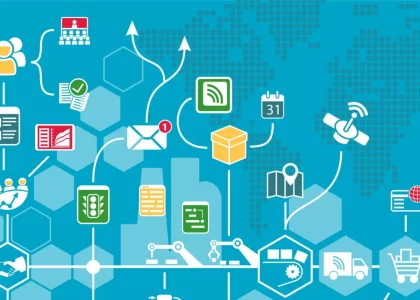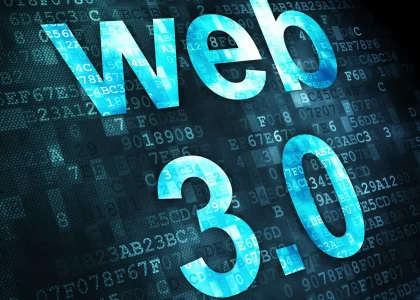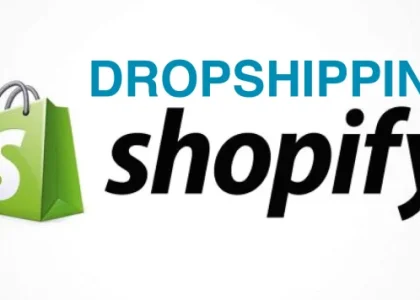As we head into 2025, businesses must adapt to the evolving demands of customers who expect a seamless and personalized experience across all touchpoints. The modern consumer no longer engages with brands through a single channel—whether it’s social media, email, in-store, or mobile apps—customers interact with businesses across multiple platforms and devices. This is where omnichannel marketing comes into play, ensuring that brands can deliver a cohesive, consistent experience throughout the entire customer journey.
In this blog post, we will dive into the concept of omnichannel marketing, its importance in today’s competitive landscape, and how you can leverage it to create a seamless customer journey in 2025. Additionally, we’ll discuss how partnering with a top digital marketing agency, such as Robust Connections, can help you optimize your omnichannel strategies for maximum effectiveness.
What is Omnichannel Marketing?
Omnichannel marketing refers to creating an integrated and unified customer experience across all channels, whether online or offline. The goal of omnichannel marketing is to ensure that customers have a consistent brand experience regardless of the device or platform they use to engage with your business.
Unlike multichannel marketing, which focuses on operating separate channels that may not always connect seamlessly, omnichannel marketing integrates all touchpoints into one cohesive strategy. This approach enables businesses to offer a personalized experience that guides customers through their journey from awareness to conversion and beyond.
The Importance of Omnichannel Marketing in 2025
1. Meeting Customer Expectations
In 2025, customers expect more than just a transactional relationship with brands—they demand personalized and fluid experiences. A study by McKinsey found that companies offering a seamless customer journey across channels see a 20% increase in customer satisfaction and a 10% increase in revenue. Customers expect businesses to recognize them across all touchpoints, meaning they don’t want to have to reintroduce themselves every time they interact with a brand.
Omnichannel marketing allows businesses to meet these expectations by ensuring that customer data, preferences, and interactions are synced across all channels, offering a personalized, consistent experience at every stage of the customer journey.
2. Building Stronger Customer Relationships
Omnichannel marketing strengthens customer relationships by making interactions more convenient and meaningful. Customers who engage with brands across multiple channels tend to be more loyal and have higher lifetime value (LTV). By adopting an omnichannel strategy, businesses can better understand customer behavior, preferences, and pain points, allowing them to nurture relationships with tailored content and offers.
3. Improving Marketing Efficiency
Integrating all your marketing channels into one cohesive strategy not only enhances customer experience but also boosts marketing efficiency. By tracking customer interactions across all touchpoints, businesses can optimize marketing efforts and allocate resources more effectively. Omnichannel marketing allows for better data collection, analysis, and automation, enabling brands to reach the right audience at the right time with the right message.
4. Staying Ahead of the Competition
In 2025, businesses that fail to adopt omnichannel marketing will likely fall behind in the competitive digital landscape. Omnichannel marketing provides a significant edge by allowing businesses to stay connected with customers across various platforms, anticipate their needs, and create a more tailored experience that outperforms competitors relying on single-channel approaches.
How to Create a Seamless Customer Journey with Omnichannel Marketing
Creating a seamless customer journey is at the core of omnichannel marketing. Here are the key steps you need to follow to develop an effective omnichannel strategy for 2025.
1. Understand Your Customer’s Journey
The first step in creating a seamless customer journey is understanding the various touchpoints that make up that journey. Consumers interact with brands across multiple stages—whether it’s discovering a product on social media, browsing on a mobile app, or completing a purchase in-store. To deliver a seamless experience, it’s crucial to map out the entire customer journey and identify all the points where your brand can engage.
a) Customer Research and Data Analysis
Conduct research to understand how your customers interact with your brand. Use customer surveys, web analytics, and social media insights to gather data on customer behaviors, preferences, and pain points. Analyzing this data will help you identify gaps and opportunities for better engagement across channels.
b) Create Customer Personas
Develop detailed customer personas based on the data you’ve collected. These personas should reflect the different segments of your target audience and their unique behaviors and preferences. Understanding your customers’ needs allows you to create tailored content and messaging for each stage of the journey.
2. Integrate All Your Channels
For an omnichannel strategy to be effective, all your channels must be interconnected. This integration ensures that customers have a unified experience across touchpoints and that their interactions are carried over seamlessly. Here’s how to integrate your channels:
a) Use Customer Relationship Management (CRM) Software
CRM software like Salesforce or HubSpot allows businesses to track and manage customer interactions across all touchpoints. By using a CRM system, you can collect customer data from multiple channels, enabling personalized communication and a more cohesive experience.
b) Synchronize Data Across Platforms
Ensure that your data is synchronized across all platforms—whether it’s your website, social media, mobile app, or email campaigns. This synchronization allows you to provide personalized content and offers based on customers’ previous interactions, improving engagement and conversion rates.
c) Automate Marketing Campaigns
Automation tools like Mailchimp, ActiveCampaign, and Marketo enable businesses to set up automated workflows that trigger based on customer behavior. For example, if a customer abandons their shopping cart, an automated email can be sent to remind them of their items. Automating your campaigns saves time and ensures consistent messaging.
3. Personalize the Customer Experience
Personalization is one of the cornerstones of a successful omnichannel strategy. In 2025, customers expect brands to deliver relevant and tailored experiences. Omnichannel marketing allows you to personalize every touchpoint by using data and insights to understand customer preferences and behavior.
a) Dynamic Content
Use dynamic content to create personalized experiences for your customers. Whether it’s a product recommendation email, personalized landing page, or targeted social media ad, dynamic content ensures that each interaction feels unique and relevant.
b) Behavioral Targeting
Leverage behavioral targeting to reach customers based on their previous interactions with your brand. By tracking browsing history, purchase patterns, and engagement metrics, you can create tailored offers and content that align with their interests.
4. Optimize Mobile and Social Channels
In 2025, mobile and social channels will continue to dominate the customer journey. Ensure that your omnichannel strategy is optimized for these platforms by making your website mobile-friendly, improving the mobile checkout process, and engaging with customers on social media.
a) Mobile-First Strategy
A mobile-first approach is essential for creating a seamless customer experience. Optimize your website for mobile devices, ensuring fast load times, intuitive navigation, and a smooth checkout process.
b) Social Media Engagement
Social media is a powerful tool for engaging with customers across their journey. Use platforms like Instagram, Facebook, and TikTok to connect with your audience, promote offers, and respond to customer queries in real time.
5. Continuously Measure and Optimize
Omnichannel marketing is a continuous process that requires constant monitoring and optimization. Use analytics tools to track customer behavior, conversion rates, and overall performance across channels. Regularly review your data to identify areas for improvement and fine-tune your strategy.
a) A/B Testing
Run A/B tests to determine which messaging, offers, and content resonate most with your audience. A/B testing helps refine your strategy and improve conversion rates.
b) Feedback Loops
Encourage customers to provide feedback through surveys, reviews, and social media. Their insights will help you make informed decisions and enhance the customer experience across all touchpoints.
6. Partner with a Digital Marketing Agency
Creating a seamless omnichannel experience is a complex task that requires expertise in various marketing channels. Working with a digital marketing agency like Robust Connections can help you streamline your omnichannel strategy and ensure its effectiveness. With their expertise in SEO, content marketing, and customer experience, Robust Connections can help you create a cohesive journey that resonates with your audience and drives measurable results.
Conclusion
In 2025, omnichannel marketing is no longer just a trend—it’s an essential strategy for creating a seamless customer journey that drives engagement, conversions, and loyalty. By integrating all your channels, personalizing interactions, and continuously optimizing your efforts, you can deliver an exceptional experience that keeps customers coming back.
With the right strategy and tools, you can position your brand for success in an increasingly competitive digital landscape. And to further elevate your omnichannel marketing efforts, consider partnering with Robust Connections, a leading digital marketing agency, to help you implement a comprehensive and effective omnichannel strategy.
By investing in omnichannel marketing, you can ensure that your brand stays relevant, competitive, and poised for long-term success in 2025 and beyond.





